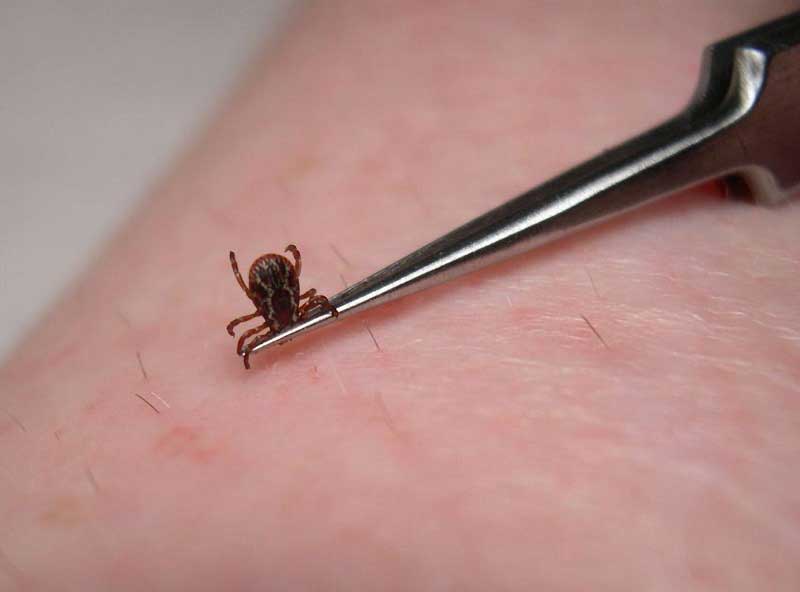RiskVA
Ticks Are Dangerous Summertime Threats 24 Jul 2013
Ticks are responsible for over 90 percent of the vector-caused diseases in the United States. Mosquitoes are involved in a mere 5 percent. They are attracted to body warmth and carbon dioxide. Moving slowly and stiffly like arthritic robots they try to locate a comfortable, protected spot behind your knees, on the inside of your thigh, around your waist, or in your belly button. They may even set up housekeeping between fingers and toes, in underarms, groin, in hair, or behind your ears.
Immature Ticks Are Most Dangerous
Young ticks are the ones most likely to transmit disease. They are tiny – about the size of the period at the end of this sentence. Only when the tick has become swollen with blood and looks like a grayish bump or mole are you likely to notice it. It usually takes up to 12 hours of feeding for a tick to infect you, so early discovery is important.
Repelling Ticks
Tuck pant legs into your boots so the little beggars can’t crawl up and easily find bare skin. Use repellents containing DEET or permethrin. Spray permethrin on clothing, tent flaps, or mosquito netting and let it dry. It bonds to the fabric and will remain active even after several trips through your washing machine. Apply DEET repellents to the skin, but permethrin should be used only on clothing, because contact with the skin chemically deactivates it.
Tick Removal
If you find a tick dining on you, do not remove it with your fingers. Dr. Nancy Hinkle, an Extension Specialist at the University of Georgia, describes ticks as balloons with an attached hypodermic needle. If you squeeze them, they may regurgitate pathogen-loaded stomach contents into you, or burst, spreading disease organisms that can enter your body through breaks in the skin.
Do not coat a tick with Vaseline or oil, burn it with a match or cigarette, put alcohol or gasoline on it, or violently jerk it off. Any of these techniques upset the tick and will increase the likelihood that it will vomit disease organisms into your body.
Grasp the tick with tweezers as close to the skin as possible and tug until it comes off, but don’t twist or rotate it. Ticks aren’t threaded, so you don’t have to unscrew them!
Tick Paralysis
Some tick bites cause a rare form of paralysis. After five to seven days of attachment, a neurotoxin in the tick’s saliva causes paralysis starting in the feet and legs and progressing upward. In about 10 percent of cases when the offending tick isn’t located, respiratory failure and death may occur. Once the tick is removed, recovery is usually very rapid.
The most common tick-borne diseases are Rocky Mountain spotted fever and Lyme disease. Ticks also carry Tularemia (rabbit fever), Human Granulocytic Ehrlichiosis (HGE), Human Monocytic Ehrlichiosis (HME), and Babesiosis. These last three diseases produce flu-like symptoms, are hard to diagnose, and can be fatal unless treated. A somewhat rare and poorly understood tick-caused disease is Southern Tick Associated Rash Illness (STARI) transmitted by the Lone Star tick in the southeastern United States.
Rocky Mountain spotted fever usually causes a rash on the ankles, wrists, and forehead that spreads to the trunk of the body, and is accompanied by fever, chills, and fatigue.
Lyme disease often begins with an expanding “bullseye” rash at the bite site; red around the edges, white in the middle, and a couple of inches or more in diameter. Fever, chills, joint pain, headache, stiff neck, backache, and a feeling of exhaustion are common.
Months or even years after the bite, Lyme disease may cause severe arthritis of the knees, hips and ankles. In some cases, meningitis, numbness and tingling of the extremities, loss of concentration and memory, hearing loss, double vision, depression, paralysis of the facial muscles, and heart problems may occur.
Make a note on your calendar if you’re bitten by a tick and keep the tick. Then if you become ill, it can be identified and help your doctor make a correct diagnosis. Put it in an empty plastic prescription bottle, snap the cap closed and put it in your refrigerator or freezer.
The key to defeating tick-borne illness is early diagnosis and treatment. Luckily, all these diseases, especially in their early stages, can usually be effectively treated with antibiotics.
Dr. Risk is a professor emeritus in the College of Forestry and Agriculture at Stephen F. Austin State University in Nacogdoches, Texas. Content © Paul H. Risk, Ph.D. All rights reserved, except where otherwise noted. Click paulrisk2@gmail.com to send questions, comments, or request permission for use.


